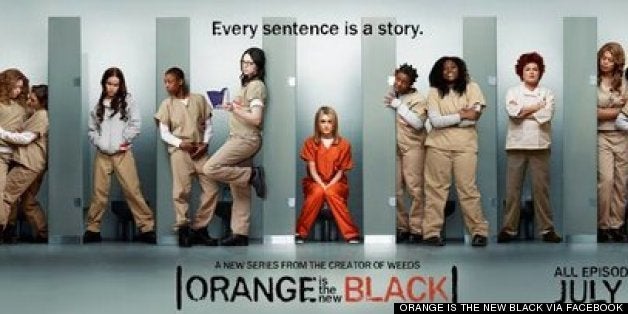
In the first episode of Orange is the New Black, Piper Chapman, the protagonist upper-middle class unlikely inmate-to-be, is seated in a van waiting to be transported to the women's prison where she will be serving a 15-month sentence. The driver of the van, to Chapman's surprise, is a fellow inmate, Lorna Morello. "They let you drive?" Chapman asks. Morello responds, "Who else is going to do it? We do everything around here."
The new Netflix series is getting a lot of attention for being an addictive yet realistic portrayal of the U.S. prison system today. Season 1 of OITNB takes on a range of issues, from discrimination against transgender prisoners to the increasingly widespread practice of charging inmates with "user fees." The first encounter between Chapman and Morello introduces another modern penitentiary trend: the re-emergence of prison labor.
For the past decade, the United States has had the highest incarceration rate in the world. According to The Sentencing Project, there has been a 500 percent increase in the number of inmates in the country's penitentiary system over the past 30 years, with 2.2 million people currently in prison or jail. To accommodate for the skyrocketing rate of incarceration, states and the federal government have turned to private companies. And the for-profit prison business is booming, as illustrated by the ACLU report, Banking on Bondage: Private Prisons and Mass Incarceration:
Private prisons for adults were virtually non-existent until the early 1980s, but the number of prisoners in private prisons increased by approximately 1600% between 1990 and 2009. Today, for-profit companies are responsible for approximately 6% of state prisoners, 16% of federal prisoners, and, according to one report, nearly half of all immigrants detained by the federal government. In 2010, the two largest private prison companies alone received nearly $3 billion dollars in revenue.
The United States has a troubled and tumultuous history when it comes to profiting from prisoners. Putting prisoners to work was a common practice in early penitentiaries, where labor was designed to be part of the larger purpose of prisoner reform. The objective of prison labor shifted, especially in the South, after the Civil War. The 13th Amendment to the U.S. Constitution outlawed slavery and involuntary servitude, but with an important exception: "except as a punishment for crime whereof the party shall have been duly convicted." Pumped with a fresh supply of "criminals" through the Black Codes' criminalization of newly freed slaves, prison labor essentially became many of the Southern states' way to deal with the end of slavery, precipitating the dark era of chain gangs and the leasing of convicts as plantation labor.
The Progressive Era generated a movement against prison labor, and ultimately the strength of labor unions coupled with the Great Depression created the climate for legislative reform. The practice of prison labor ebbed in the U.S. for several decades, until the pressure of an increasingly overcrowded system, caused by the onset of the mass incarceration era, influenced legislative changes that allowed for a re-emergence of the practice.
Which brings us back to Episode 1 of Orange Is the New Black. Today, there are several categories of prison labor, one of them being "institutional support jobs" referring to inmates doing work related to daily prison operation, which would include Morello as the prison's van driver, and the ever-powerful Red as the cafeteria's head cook. In theory, putting prisoners to work is good practice, as it prevents idleness, gives inmates a chance to earn money, and could even turn incarceration into an opportunity for job skills development. But the reality is different. For starters, courts have established that prisoners are not covered by many of the nation's employment and labor laws, including the Fair Labor Standards Act, which means that there are no minimum wage or overtime pay requirements for prison labor. And so some prisoners are paid 23 cents to $1.15 an hour, while others are not paid at all. In the law school clinic I co-teach, we had a client who testified during an immigration hearing that he made $25 a month while in prison, and to add insult to injury the government attorney grilled him on whether he had paid income taxes on these wages.
While it is not clear that prison labor benefits inmates, it is evident that it contributes toward the corporate bottom line. Prison labor is being used today to put companies at a comparative advantage vis-à-vis those that rely on the regular labor market. Moreover, taxpayers are subsidizing prison companies for "employing" prisoners, because companies that pay inmates for their work can get up to 40 percent back in tax reimbursements. Prison labor today, therefore, is part of why penitentiaries yield a multi-billion dollar profit.
From the vantage of for-profit corporations' accounting, the notion that Orange is the New Black takes on a whole different meaning.